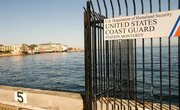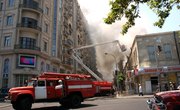National disasters such as that experienced in 2005 with Hurricane Katrina have the potential to create chaos within a region and exact a heavy cost both on lives and economically. Government's role in disaster management is to provide a central, coordinated plan of action to address the damage caused by such an event as well as the needs of the people affected.
Identification
When a disaster such as a flood, hurricane, or earthquake occurs within the United States, the Federal Emergency Manangement Agency (FEMA) is responsible for coordinating assistance and resources to the particular region. FEMA, a branch of the Department of Homeland Security, was created in 1979.
National Response Framework
FEMA has established a set of procedures, the National Response Framework, that identifies the principles, roles, and structures to direct government response in times of disaster. The protocols provide coordination among state, local, and federal resources. Specialists from various fields are assigned specific roles and objectives. Rebuilding damaged areas and relief efforts are also part of the National Response Framework.
Emergency Management
Government’s role in disaster management is to address the degree of risk present within an emergency situation. Hazardous conditions may be present, such as polluted water supplies, damaged power lines, and inadequate housing. When needed, civil defense units such as the National Guard may be called to maintain order within a disaster situation. Emergency management also involves providing the support necessary to prepare and rebuild a community in the aftermath of a disaster.
Emergency Response Teams
FEMA is made up of emergency response teams located throughout the country. These teams act as branches of the federal government during times of crisis. The National Disaster Medical System prepares and organizes these teams. Each team is trained within a different specialty area including search and rescue, medical assistance, mobile emergency support, and mortuary operations. Doctors, nurses, and paramedics provide medical assistance, while private organizations, public safety agencies, and hospitals sponsor the personnel and resources needed.
Communications
FEMA’s communications network team fulfills the government’s role in providing communication resources in disaster areas. These groups provide the lines of communication needed to keep responders in touch with government and public officials. Communications teams manage the computers, phone lines, satellite uplinks, and power generators. When needed, teams can erect cell phone towers in cases where local responders are unable to access telephone systems. Mobile communications systems can also be put in place to provide airlifted networks of communication throughout a particular region.
Related Articles
References
Writer Bio
Jacquelyn Jeanty has worked as a freelance writer since 2008. Her work appears at various websites. Her specialty areas include health, home and garden, Christianity and personal development. Jeanty holds a Bachelor of Arts in psychology from Purdue University.










